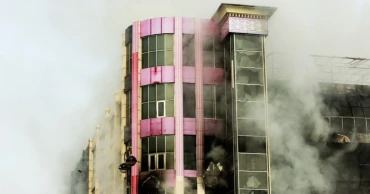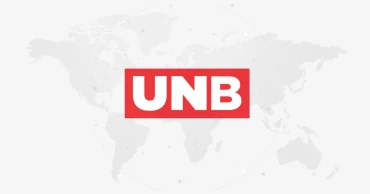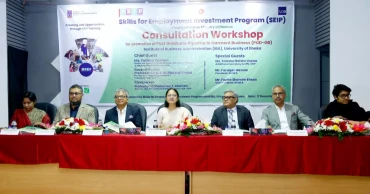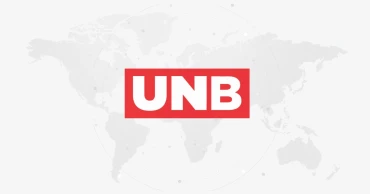industry
Common Causes of Fires, Explosions at Homes, Offices, Markets, Industries
Fire hazards and explosions may occur unexpectedly and lead to devastating losses of human lives and structures. In recent years, such mishaps have increased significantly. It is crucial to understand the general causes of fire hazards, to reduce the risk and take preventive measures. Let’s explore some of the most common causes of explosions and fires in residential, commercial, and industrial spaces.
5 Major Sources of Indoor Explosions and Fires Hazards
Gas leaks
Gas leaks are one of the most common causes of explosions in Bangladesh. This can happen due to faulty gas pipelines, poorly maintained gas appliances, or improper gas connections.
Electrical faults
Electrical faults such as short circuits, overloaded circuits, or faulty wiring can lead to explosions. This can happen when electrical appliances are used improperly or when they are not maintained properly.
Read More: Gas explosion at residential, commercial buildings: Common causes and ways to prevent them
Chemical explosions
Chemical explosions can occur in commercial spaces where chemicals are stored or used. This can happen due to improper storage or handling of chemicals, or when incompatible chemicals are stored together.
Pressure vessel explosions
Pressure vessel explosions can occur in industrial settings where high-pressure vessels are used. This can happen due to improper maintenance, overpressure, or corrosion.
2 years ago
Industries can now use LPG as a reliable energy solution: Speakers
Speakers at a seminar have said that many industries can now use liquefied petroleum gas (LPG) as a reliable energy solution to meet their needs in the nagging gas crisis.
“The price of LPG is flexible and reasonable. If there is some policy support, operators are ready to take the challenge in this regard,” said Azam J Chowdhury, president of LPG Operators Association of Bangladesh (Loab).
The Hydrocarbon Unit, a subordinate body of the Energy and Mineral Resources Division organized the virtual seminar on Monday titled: LPG: An Alternate Energy Solution for Industrial Segment in Bangladesh.
The Loab president said that if the country wants to keep the persistent 7 percent GDP growth, it must promote the LPG to grow its use in industrial and other sectors too as the natural gas alone cannot meet the growing demand.
“We’ve been providing LPG to different industries which have been suffering for the gas crisis. Now, the demand for LPG is growing at 30-40 percent” he added.He said the LPG sector needs some policy support to overcome its challenges.
Read more: 12kg LPG cylinder to cost Tk 46 more
A huge quantity of LPG is transported through river routes where navigation is essential while there must be some cut in taxes and stop allowing industries to collect gas from CNG stations in a risky way, he said.
He said setting up a dedicated deep sea port for LPG import should be top of the agenda to ensure a consistent supply of this petroleum fuel at a reduced cost as the current transport cost is so high.
“The operator cannot import LPG through large vessels over a capacity of 5000 metric tons due to the absence of a dedicated deep sea port,” he said.
Secretary of the Energy and Mineral Resources Division Mahbub Hossain, additional secretary Humayun Kabir, head of marketing of Bashundhara LPG, and CEO of Omera Petroleum Tamzeem Chowdhury spoke on the occasion while Director General of Hydrocarbon Unit Abul Khayer Md. Aminur Rahman moderated the event.
Jakaria Jalal said LPG can be suited for some specific industries depending on the design and its energy consumption.
He said there should be a unified pricing formula for all the available primary options including LPG, LNG and other liquid petroleum.
If the prices of all energy options are variable, then LPG will be much more sustainable, he added.
3 years ago
BGMEA for effective industry-academia partnership for tackling future challenges
The Bangladesh Garment Manufacturers and Exporters Association (BGMEA) has stressed the need for effective collaboration between universities and industries for developing mid and high-level managers equipped with the knowledge and skills required to meet the market and industry demand.
The industry needs more qualified and competent workers and professionals to meet the future challenges of the readymade garments (RMG) industry, especially in the context of fast fashion and disruptive technologies, BGMEA President Faruque Hassan said Saturday.
He was speaking at a consultation workshop on postgraduate diploma in garment business (PGD-GB) programme organised by SEIP and the Institute of Business Administration (IBA) of the University of Dhaka.
The apparel industry will need more skilled workers and professionals to cope with changing trends in the global apparel industry, especially brought about by the fourth industrial revolution (4IR), the BGMEA president said.
He also called upon the government to continue its support to the RMG industry in addressing the skilled workforce issue to remain competitive in the coming years, especially in the post-LDC era.
Read more: BGMEA urges global brands, buyers to adopt strategies for promoting mutual growth
Fatima Yasmin, senior secretary, finance division, and national project director, SEIP, attended the workshop as chief guest. Pro-Vice-Chancellor (Academic) of the University of Dhaka Professor ASM Maksud Kamal was also present.
IBA Director Professor Mohammad A Momen chaired the programme. Fatema Rahim Veena, additional secretary, and EPD, SEIP, and Fazlee Shamim Ehsan, vice-president, Bangladesh Knitwear Manufacturers and Exporters Association, were also present.
Read more: BGMEA, Oerlikon discuss collaboration on capacity building in manmade fibre, recycling
3 years ago
'5G can change the face of industry in Bangladesh'
In an exclusive interview with UNB, Huawei's Asia Pacific Region's Vice President Zhang Zhengjun recently spoke about the tech giant's plans in Bangladesh.
Q. 5G is here already. What are your plans for Bangladesh?
Yes, in the Asia-Pacific region, 5G is already a hot topic. Korea and Japan were among the first countries to launch 5G. Thailand followed. Now, 30% of Thais are using 5G.
Bangladesh is an important country for us. In 2020, Huawei participated in the Digital Bangladesh Mela where we showcased the real power of 5G -- mobile internet speed up to 1.6 GBps.
We have had a lot discussions with the Bangladesh government and telecom operators.
Though 4G has been catering to the needs of mobile users for watching videos on YouTube or using TikTok, or Facebook, I found weak signal at many places -- like in Sylhet and Mymensingh.
There are 183 million mobile subscribers in Bangladesh. For such a large population, more cellular towers are required for ensuring better coverage.
I believe Bangladesh Telecom Regulatory Authority (BTRC) and Post and Telecommunication Division (PTD) will encourage telecom companies to facilitate installation of more mobile towers in Bangladesh to provide continuous network coverages.
And, this improvement should be ensured in all cities and rural areas across Bangladesh; not only in the major cities like Dhaka and Chattogram. So, this is important to bridge the digital divide.
Read more: Huawei: Maximise network resources for 5G's commercial success
Bangladesh government has already released 5G spectrum. However, 5G is more used in industrial areas. In China, for instance, 5G is widely in use in hospitals, port areas, manufacturing units. Bangladesh should take note of these things.
PTD has plans to utilise 5G in Chattogram. In a port city like Chattogram, a lot of workers are there to control different machineries. They stay at their workplaces for a very long time. If 5G is introduced there, workers can control the machines remotely because of the low latency and massive connections.
So, this kind of advantages could be used for industries in Chattogram and Mongla port areas and also at airports in different cities. For consumer uses, 4G is not bad, but l, of course, 5G will be better.
Manufacturing units can benefit from the use of 5G. Assembling lines that need a lot of cables to connect with different equipment during the production of, say, a mobile handset, can use 5G to save time and money.
In Bangladesh, the garment industry can also bank on artificial intelligence plus 5G to boost production.
Q. You said that Thailand, China and Korea have already launched 5G. In Bangladesh, we are still advocating for 4G’s expansion and 5G’s industrial use. But what is your experience in these three countries?
I think there are two aspects. People are more interested in 5G, especially in Korea, where there is a very big entertainment industry. People enjoy HD videos and gaming, which draw them to 5G. In Bangkok, thanks to 5G, the mobile internet speed is much faster and data traffic is much better. Moreover, different industries in both the countries also want to utilise 5G to improve efficiency and save costs.
I think operators also want to promote 5G, because now, especially in countries like Bangladesh, there's 2G to 5G. And for every technology, you need a network, even more than one network, because you have a different spectrum.
As there are so many networks, you need a lot of money for operation and maintenance; there’s a huge cost in terms of both Capex and Opex. So operators want to merge it; for example, in some countries, 3G has been shut down. In Bangladesh, I believe they will focus more on 4G and 5G.
Q. What would be your suggestion for the country, which is lagging in 4G coverage but 5G is available?
Let’s take Bangladesh as an example. The first suggestion is that 4G is the foundation. So, continuous and very good experience of 4G network is still needed.
The government and operators need to join hands and work together with that, because in rural areas, honestly speaking, there’s not so much convenience there, because even if you put up a tower and set up the network, revenue is little. So how to encourage operators to set up the network in rural areas and make coverage continuous and seamless -- is an important topic.
Read more: Huawei promises more innovation to push 5G operations ahead globally
And secondly, I think that 5G should be used extensively in some peak traffic areas like Chattogram and Dhaka. Because there we have high-end users – some people who use 5G handsets want 5G and better experience in online gaming.
Industries can use 5G for digitalisation that will help improve efficiency. Maybe you don’t have to roll out 5G countrywide in the very beginning, it depends on the needs.
Q. The entire world is suffering from energy crisis. Bangladesh is no exception. In that case, how Huawei’s tech like 5G can help countries like ours in energy?
Actually, regarding this, I think I can tell you two aspects. One thing is about the grid itself. Especially like in China, we use 5G to monitor the grid network to guarantee its smooth functioning. We also use drones to check power lines. Secondly, talking about energy, Huawei also have solar power solutions.
A one-time investment on solar power can serve upto 30 years, and you don’t have to import more oil. Now the unit price of solar power is equal or even less than a unit of traditional electricity.
Q. What about the health sector, do you have any plan for smart hospitals?
I do believe every country needs smart hospitals. From a Bangladesh perspective, I believe you need a network to cover the entire country.
Currently, every hospital is isolated, very independent. So, one common challenge is that one patient, when he or she goes to the hospital and do some checkups, and then it's difficult for them to get this record at another hospital because the data is not centralised. In rural areas, it's difficult for people to access proper healthcare. Here, comes the role of technology again.
Read more: Huawei ICT Incubator announces top 6 startups from Bangladesh
Q. You have a strong partnership in Bangladesh in building telecom structure. What's your next plan?
We are in Bangladesh for 23 years. Huawei has different business groups. The first one we call it CNBG (Carrier Network Business Group) that is the area with telecom operators. Secondly, we have the Enterprise Business. We cooperate with enterprises and the government. The third one is Consumer Business Group that includes laptops, tablets and wearables. And another one is Huawei Cloud. We started Huawei Cloud in Bangladesh in 2018.
Next is our Digital Power that reflects smart energy/solar power. So talking about solar power in Bangladesh, we cooperate with the government and try to promote it. We have the second largest solar power plant in Mymensingh.
Q. Over the next five years or so, where does Huawei want to stand in Bangladesh?
Actually, I believe the operators, I mean, the carrier business has still potential. Because 5G is not yet ready and 4G lacks countrywide coverage. So, I believe there is a high potential of work in this area. I can say that operators, regulators and also suppliers like us will need to understand each other and collaborate to make the network better.
Especially now, we value our position in Bangladesh. Bangladesh's economy is stable and growing. So, now it is high time for Bangladesh to grow further in the digital sector. We are paying more and more attention to the Bangladesh market, and we will try to develop a better ecosystem.
3 years ago







